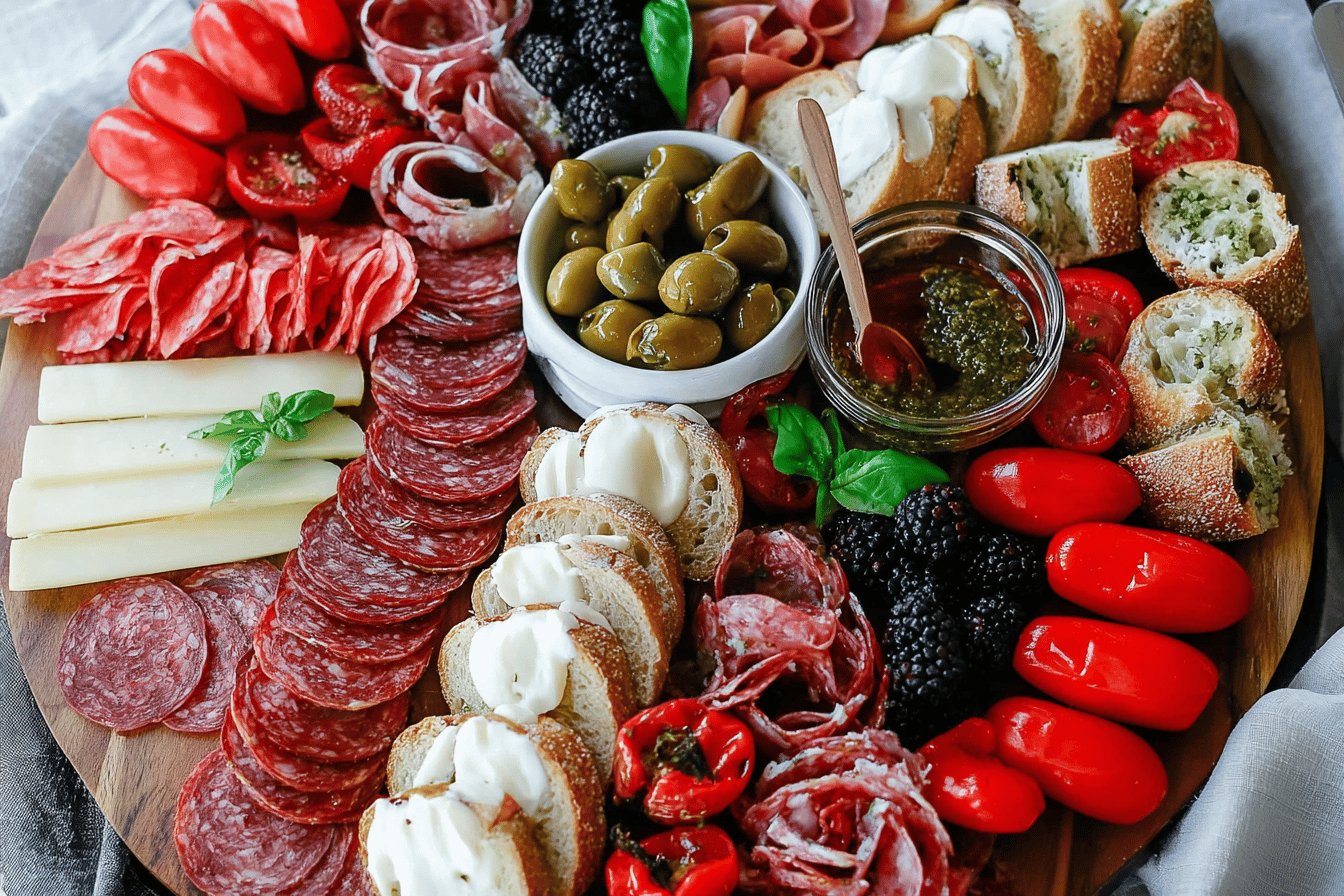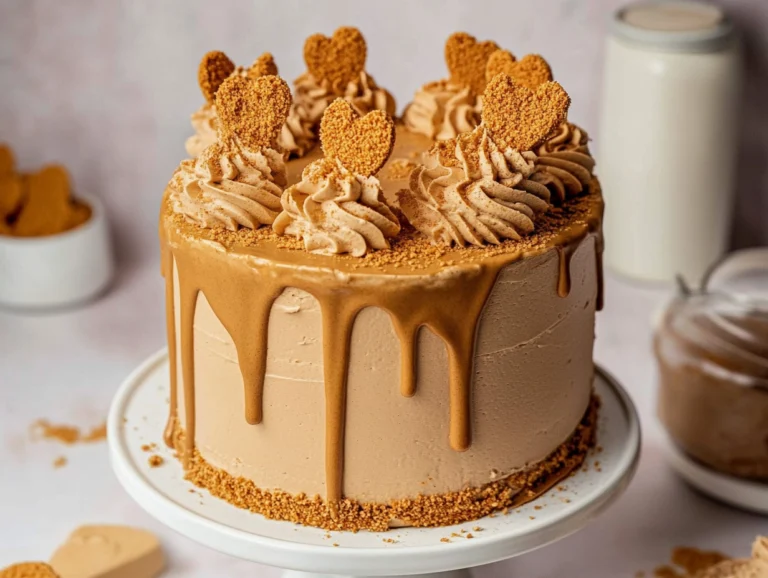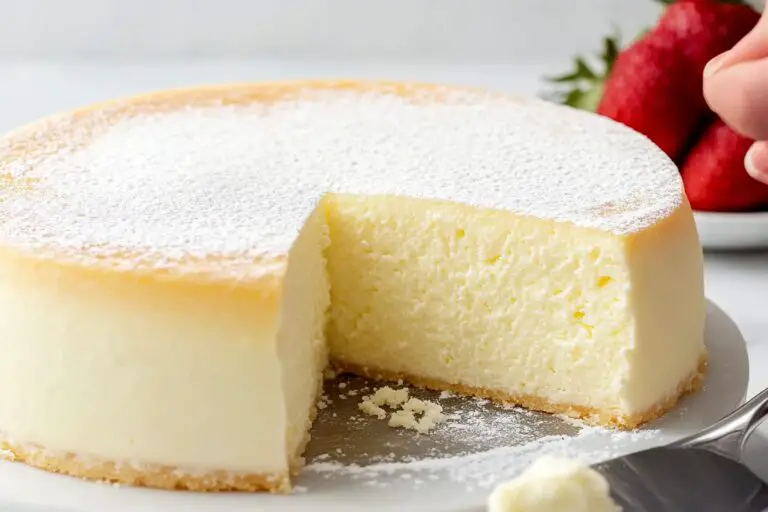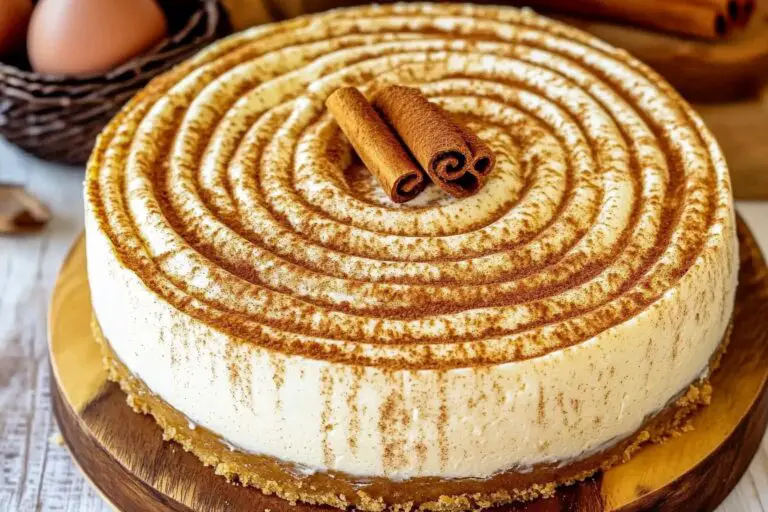Italian Charcuterie Board
Introduction
An Italian Charcuterie Board is a crowd-pleasing and visually stunning spread that brings together savory meats, flavorful cheeses, fresh fruits, and other delightful accompaniments. Perfect for entertaining, gatherings, or an indulgent evening at home, this board is both versatile and customizable. The combination of textures, tastes, and colors makes it a wonderful centerpiece for any occasion. Creating your own charcuterie board is simpler than it might seem, and this guide will walk you through the ingredients, prep time, and tips to get the best results.
Detailed Ingredients with measures
For a well-balanced Italian charcuterie board, make sure to include a mix of textures and flavors. Here’s a breakdown of the items you will need:
– Thinly sliced prosciutto
– Salami slices
– Capocollo or soppressata
– Wedges of parmesan cheese
– Creamy mozzarella balls (marinated or fresh)
– Aged fontina cheese
– Freshly washed grapes or figs
– Assorted berries such as blackberries or raspberries
– Italian crackers or crostini
– Fresh crusty bread
– Kalamata olives or Castelvetrano olives
– Artichoke hearts (optional)
– Cherry tomatoes
– A drizzle of honey or balsamic glaze for serving
Customize your selection based on the preferences of your guests and the seasonality of fresh produce. Aim for a variety of sweet, salty, and tangy elements to balance the board.
Prep Time
Putting together a charcuterie board does not require cooking but involves thoughtful preparation. Gathering all the ingredients and assembling the board typically takes around 15-20 minutes, depending on the size of your spread and your pace. Preparing and washing fresh fruits, slicing bread, and arranging everything visually are the main steps.
Cook Time, Total Time, Yield
Cook Time: None
Total Time: Approximately 20 minutes
Yield: 6-10 servings (adjust portions as needed for smaller or larger groups)
Putting an Italian charcuterie board together is as much art as it is about flavor. Whether you’re looking to impress your guests or simply elevate snack time, this guide provides an approachable way to create a beautiful and delicious experience. Enjoy with your favorite Italian wine or sparkling beverage to complete the ambiance.
Detailed Directions and Instructions
Step 1: Select a Board or Platter
Choose a large wooden or marble board as the foundation for your Italian charcuterie board. Make sure it is spacious enough to hold all your ingredients.
Step 2: Arrange the Meats
Start by folding or layering each type of cured meat onto the board. Use a variety of shapes and techniques, such as rosettes, rolls, or simple folds to create visual interest.
Step 3: Add the Cheeses
Place a mix of soft, semi-soft, and hard cheeses on the board. Leave some cheeses whole for cutting and slice others into bite-sized portions to make them easily accessible.
Step 4: Incorporate Crackers or Bread
Surround the meats and cheeses with crackers, breadsticks, or sliced baguette pieces to add crunch and texture.
Step 5: Include Fresh and Dried Fruits
Scatter fresh fruit like grapes, berries, or figs across the board. Add dried fruits such as apricots, dates, or cherries for sweetness and contrast.
Step 6: Add Nuts
Fill any empty spaces with nuts like almonds, pistachios, or walnuts. These add a satisfying crunch and complement the meats and cheeses.
Step 7: Incorporate Small Bowls
Use tiny bowls or ramekins to hold items like olives, cornichons, or mustards. This prevents juices from spilling onto the board.
Step 8: Add Sweet Accents
Include optional sweet items such as honeycomb, fruit spreads, or fig jam. These can be placed in small bowls or spread directly onto the board.
Step 9: Garnish
Sprinkle fresh herbs like rosemary, thyme, or parsley for an added pop of color and aroma. You may also use edible flowers or citrus slices if desired.
Step 10: Final Presentation
Ensure that all items are evenly spaced and visually appealing. Check for a balance of colors and textures. Serve immediately or preserve by lightly covering until serving time.
Notes
Note 1: Cheese Selection
Choose at least three types of cheese—a soft cheese like brie or goat cheese, a semi-soft option like gouda, and a hard cheese like parmesan or aged cheddar.
Note 2: Meat Preparation
Opt for a variety of meats such as prosciutto, salami, and capicola to ensure different flavors and textures.
Note 3: Add Seasonal Touches
Incorporate seasonal fruits, vegetables, or herbs to give your board a fresh and tailored feel.
Note 4: Practical Tips
Cut and prepare items like cheese or fruits ahead of time to simplify assembly. Use small utensils like cheese knives, spreaders, or tongs for ease of serving.
Note 5: Pair with Drinks
Serve the charcuterie board alongside wine or sparkling water for a more complete experience that pairs well with the flavors.
“`html
Cook Techniques
Choose a Variety of Italian Meats
Include a selection of cured meats such as prosciutto, salami, and soppressata. Arrange them in different shapes like folded slices or rolled slices for visual appeal.
Select a Mix of Cheeses
Pick both hard and soft cheeses such as Parmesan, fresh mozzarella, or asiago. Cut cheeses into different shapes like cubes, wedges, or slices for variety.
Add Fresh Fruit
Incorporate fresh fruits like grapes, figs, or berries to add natural sweetness and balance the flavors of the meats and cheeses.
Include Dried Fruits and Nuts
Dried apricots, figs, and nuts such as almonds or pistachios provide texture and a slightly sweet complement to the savory items.
Don’t Forget the Crunch
Add breadsticks, crostini, or thin crisp crackers for texture, and pair them with dipping options like olive oil or balsamic vinegar.
Include Olives and Pickled Vegetables
Offer a small variety of briny items like olives, artichoke hearts, or pickled peppers as an additional layer of texture and tangy flavor.
Incorporate Fresh Herbs for Garnish
Place fresh herbs such as rosemary sprigs or basil leaves across the board to enhance the aesthetic and add a subtle fragrance.
FAQ
What types of meats should I include on an Italian charcuterie board?
Focus on classic Italian meats such as prosciutto, salami, and soppressata. Offering a variety ensures distinct textures and flavors.
What kinds of cheeses work best for an Italian charcuterie board?
A mix of cheeses such as Parmesan, fresh mozzarella, asiago, or gouda is ideal. Combining hard, soft, and aged cheese provides variety.
How do I arrange the items on the charcuterie board?
Start by placing larger items like cheeses and bowls first, then arrange meats around them. Fill the gaps with crackers, fruits, nuts, and small garnishes.
Can I prepare the charcuterie board ahead of time?
Yes, you can prepare it a few hours in advance. However, make sure to wrap it tightly with plastic wrap and refrigerate. Add crackers just before serving to avoid sogginess.
What are the best fruits to use on the board?
Fresh fruits like grapes, figs, and berries work well due to their natural sweetness. You can also add dried fruits such as apricots or figs for a different texture.
What types of crackers or bread should I use?
Opt for items with a neutral flavor such as plain crostini, crisp crackers, or breadsticks to complement the meats and cheeses without overpowering them.
How do I make the board visually appealing?
Vary colors, textures, and shapes while arranging items symmetrically. Use garnish like fresh herbs to enhance the overall presentation.
What beverages pair well with an Italian charcuterie board?
Pair the charcuterie board with Italian wine such as Chianti or Prosecco, or a sparkling water option for a non-alcoholic beverage.
“`
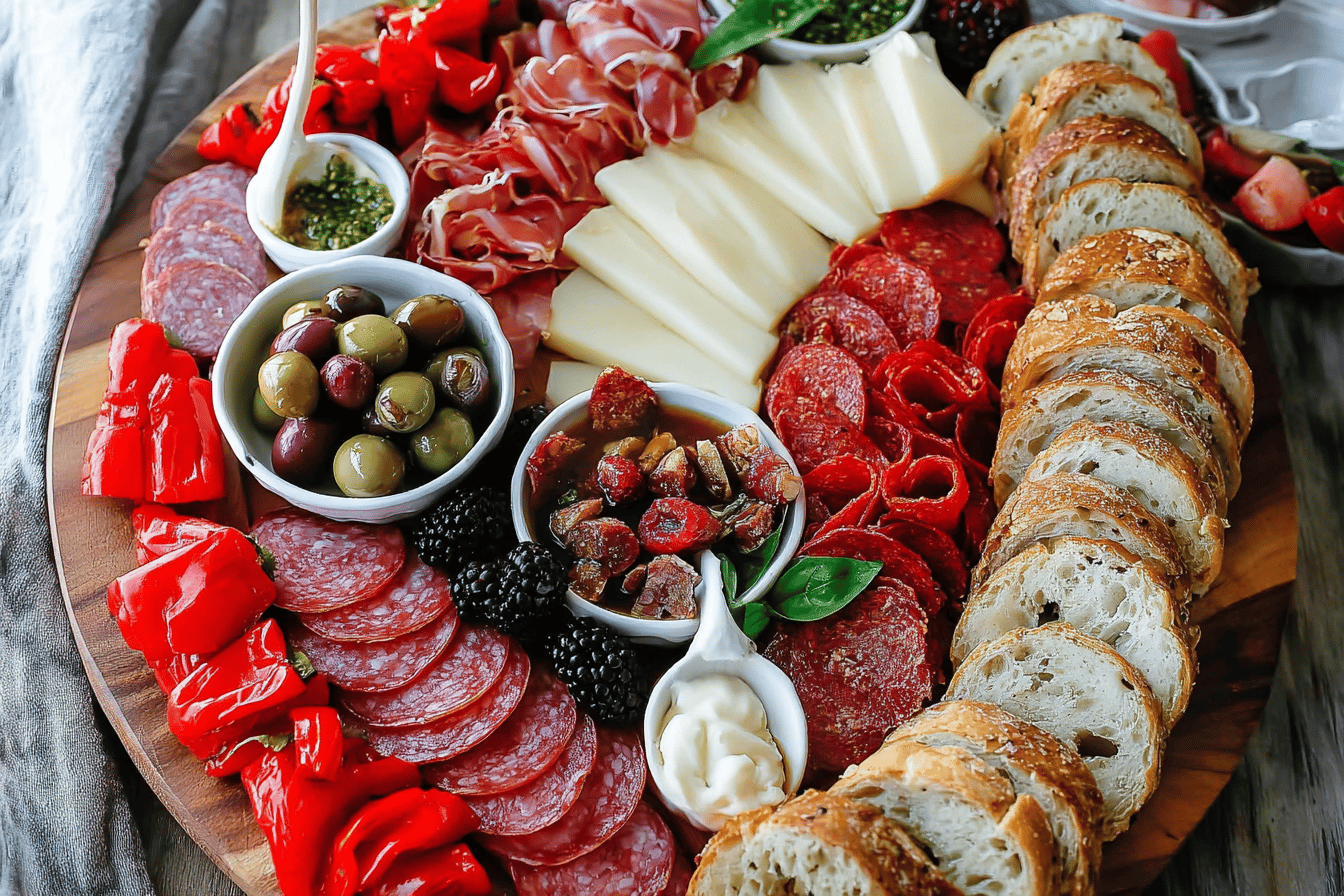
“`html
Conclusion
An Italian charcuterie board is not only a feast for the stomach but also for the eyes. With the perfect balance of flavors, textures, and colors, it offers something for every palate. Whether you’re hosting a party, creating a romantic dinner at home, or simply enjoying a delightful snack, this charcuterie board is a versatile and elegant option that guarantees a memorable culinary experience for you and your guests.
More recipes suggestions and combination
Cheese and Fruit Platter
Complement your charcuterie board with a refreshing array of cheeses paired with seasonal fruits like grapes, berries, and sliced pear for a wholesome and delicious option.
Italian Bruschetta Spread
Enhance your appetizers by offering a bruschetta topping station with crusty bread slices, fresh tomatoes, basil, olive oil, and balsamic vinegar.
Antipasto Salad
Combine the flavors of your charcuterie board with a simple antipasto salad featuring olives, marinated vegetables, mozzarella, and cured meats.
Marinated Vegetables
Add some vibrant flavor with marinated vegetables like artichoke hearts, roasted red peppers, and sun-dried tomatoes that pair beautifully with meats and cheeses.
Caprese Skewers
Create easy bite-sized Caprese skewers using fresh mozzarella balls, cherry tomatoes, fresh basil, and a drizzle of balsamic glaze.
Prosciutto-Wrapped Melon
Offer a refreshing treat of sweet melon wrapped in savory slices of prosciutto for a flavorful and elegant addition to your spread.
“`

